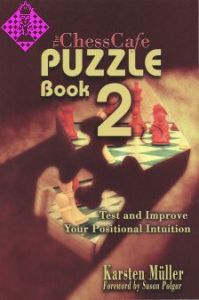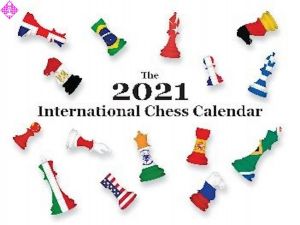Artikelnummer
LMHEIEOPE4THE
Autor
Elements of Positional Evaluation
How the Pieces Get their Power
216 Seiten, kartoniert, Russell Enterprises, 4. Auflage 2023, Erstauflage 1990
Vorübergehend ausverkauft
Which side stands better?
How much better?
Why?
Most chess players rely on loosely knit, unstructured methods to evaluate chess pieces and positions. They learn positional principles which often lead to inaccurate evaluations and faulty decisions about how to proceed.
This ground-breaking book by best-selling chess author Dan Heisman addresses the evaluation and understanding of how static features affect the value of the pieces in a given position. Now in its fourth edition, emphasis is placed on the static evaluation of each piece's value and its role in the overall position rather than the assessment of a specific position. Heisman's approach can also be applied to help evaluate entire positions by helping to answer the questions who stands better, by how much, and why?
About the Author
National Master Dan Heisman is a chess writer and professional chess instructor in the Philadelphia area. His best-selling chess books include Looking for Trouble and Back to Basics: Tactics. His award-winning monthly column for beginners, Novice Nook, has been a regular feature at ChessCafe.com since 2001.
How much better?
Why?
Most chess players rely on loosely knit, unstructured methods to evaluate chess pieces and positions. They learn positional principles which often lead to inaccurate evaluations and faulty decisions about how to proceed.
This ground-breaking book by best-selling chess author Dan Heisman addresses the evaluation and understanding of how static features affect the value of the pieces in a given position. Now in its fourth edition, emphasis is placed on the static evaluation of each piece's value and its role in the overall position rather than the assessment of a specific position. Heisman's approach can also be applied to help evaluate entire positions by helping to answer the questions who stands better, by how much, and why?
About the Author
National Master Dan Heisman is a chess writer and professional chess instructor in the Philadelphia area. His best-selling chess books include Looking for Trouble and Back to Basics: Tactics. His award-winning monthly column for beginners, Novice Nook, has been a regular feature at ChessCafe.com since 2001.
| EAN | 9781949859621 |
|---|---|
| Gewicht | 300 g |
| Hersteller | Russell Enterprises |
| Breite | 15,2 cm |
| Höhe | 22,9 cm |
| Medium | Buch |
| Erscheinungsjahr | 2023 |
| Autor | Dan Heisman |
| Sprache | Englisch |
| Auflage | 4 |
| ISBN-13 | 9781888690583 |
| Jahr der Erstauflage | 1990 |
| Seiten | 216 |
| Einband | kartoniert |
| Name | Russell Enterprises |
|---|---|
| Adresse | 234 Depot Road Milford, CT 06460 USA |
| Internet | www.Russell-Enterprises.com |
| hwr@russell-enterprises.com |
Verantwortlicher Importeuer:
| Name | Schachversand Niggemann |
|---|---|
| Adresse | Schadowstraße 5 48163 Münster Deutschland |
| info@schachversand.de | |
| Internet | www.schachversand.de |
005 Dedication
005 Preface
006 Introduction
Chapter 1: The Background of Positional Knowledge
012 1.1 Definitions
018 1.2 A Brief History of Positional Theory
023 1.3 Positional Theory in 1974
031 1.4 Inadequacies of 1974 Theory
Chapter 2: The Elements
036 2.1 Introduction
037 2.2 Mobility
044 2.3 Flexibility
049 2.4 Vulnerability
055 2.5 Center Control
057 2.6 Piece Coordination
063 2.7 Time
068 2.8 Speed
070 2.9 Summary
Chapter 3: Pseudo-Elements
071 3.1 Introduction
071 3.2 Material
075 3.3 Space
077 3.4 King Safety
079 3.5 Development
084 3.6 Summary
Chapter 4: The Pieces in Relation to the Elements
085 4.1 Introduction
085 4.2 Mobility
093 4.3 The Knight
099 4.4 The Bishop
110 4.5 The Rook
116 4.6 The Queen
118 4.7 The King
119 4.8 The Pawn
120 4.9 Piece Summary
Chapter 5: Static Features and the Elements
126 5.1 Introduction
126 5.2 Static Features and the Pawns
130 5.2.1 Doubled Pawns
138 5.2.2 Isolated Pawns
142 5.2.3 Backward Pawns
144 5.2.4 Passed Pawns
147 5.2.5 Pawn Summary
149 5.3 Files and Diagonals
149 5.3.1 Introduction
152 5.3.2 Open Files
153 5.3.3 Semi-Open Files
155 5.3.4 Ranks
158 5.3.5 Diagonals
158 5.4 Weak Squares and Outposts
168 5.5 Summary
Chapter 6: Miscellaneous Applications of the Theory
169 6.1 Introduction
169 6.2 The Elements During the Phases of the Game
170 6.2.1 The Opening
171 6.2.2 The Middlegame
172 6.2.3 The Endgame
175 6.3 A Brief Guide to Chess Principles
181 Chapter 7: Epilogue
183 Appendix: Illustrative Games
211 Bibliography
213 Footnotes
216 Acknowledgements
216 About the Author
005 Preface
006 Introduction
Chapter 1: The Background of Positional Knowledge
012 1.1 Definitions
018 1.2 A Brief History of Positional Theory
023 1.3 Positional Theory in 1974
031 1.4 Inadequacies of 1974 Theory
Chapter 2: The Elements
036 2.1 Introduction
037 2.2 Mobility
044 2.3 Flexibility
049 2.4 Vulnerability
055 2.5 Center Control
057 2.6 Piece Coordination
063 2.7 Time
068 2.8 Speed
070 2.9 Summary
Chapter 3: Pseudo-Elements
071 3.1 Introduction
071 3.2 Material
075 3.3 Space
077 3.4 King Safety
079 3.5 Development
084 3.6 Summary
Chapter 4: The Pieces in Relation to the Elements
085 4.1 Introduction
085 4.2 Mobility
093 4.3 The Knight
099 4.4 The Bishop
110 4.5 The Rook
116 4.6 The Queen
118 4.7 The King
119 4.8 The Pawn
120 4.9 Piece Summary
Chapter 5: Static Features and the Elements
126 5.1 Introduction
126 5.2 Static Features and the Pawns
130 5.2.1 Doubled Pawns
138 5.2.2 Isolated Pawns
142 5.2.3 Backward Pawns
144 5.2.4 Passed Pawns
147 5.2.5 Pawn Summary
149 5.3 Files and Diagonals
149 5.3.1 Introduction
152 5.3.2 Open Files
153 5.3.3 Semi-Open Files
155 5.3.4 Ranks
158 5.3.5 Diagonals
158 5.4 Weak Squares and Outposts
168 5.5 Summary
Chapter 6: Miscellaneous Applications of the Theory
169 6.1 Introduction
169 6.2 The Elements During the Phases of the Game
170 6.2.1 The Opening
171 6.2.2 The Middlegame
172 6.2.3 The Endgame
175 6.3 A Brief Guide to Chess Principles
181 Chapter 7: Epilogue
183 Appendix: Illustrative Games
211 Bibliography
213 Footnotes
216 Acknowledgements
216 About the Author
Mehr von Russell Enterprises
-
 The Art of Sacrifice in Chess24,95 €
The Art of Sacrifice in Chess24,95 € -
 The Chess Cafe Puzzle Book 224,95 €
The Chess Cafe Puzzle Book 224,95 € -
 The Bishop24,95 €
The Bishop24,95 € -
 The Art of Bisguier25,95 €
The Art of Bisguier25,95 € -
 The Chameleon Variation19,95 €
The Chameleon Variation19,95 € -
 The 3...Qd8 Scandinavian24,95 €
The 3...Qd8 Scandinavian24,95 € - Mehr von Russell Enterprises


